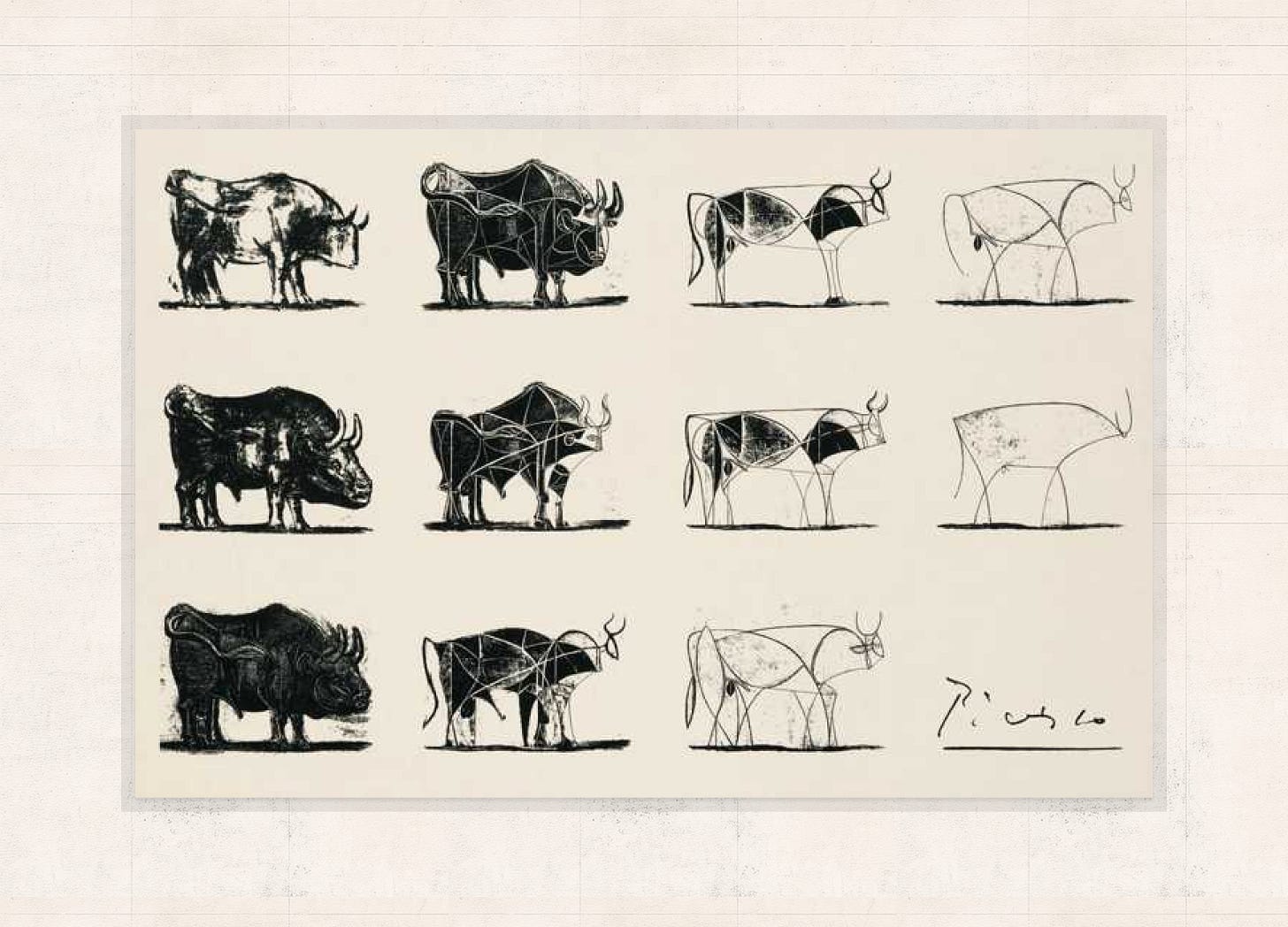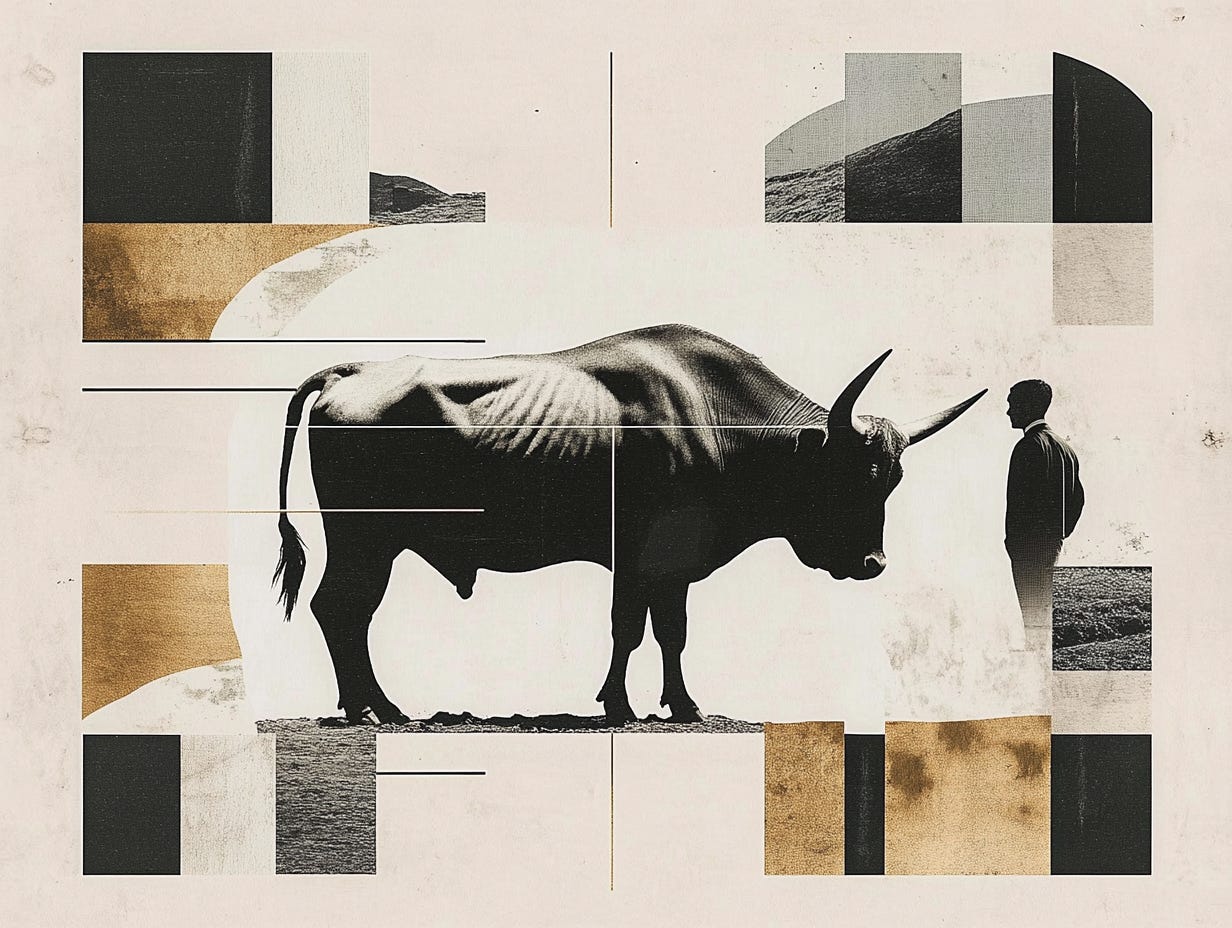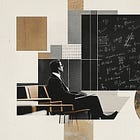Picasso's Bull: The Art of Earning Simplicity
The iterative path from complex to essential
Welcome to Unknown Arts — I’m Patrick, your field guide to the creative frontier. Join thousands of builders around the world navigating what’s next each week.
Even Picasso couldn't skip the humble beginnings of creative work.
Between 1945 and 1946, he created eleven drawings of a bull, starting with a detailed, realistic sketch and ending with just a few flowing lines. What most people miss is that despite his mastery he couldn't have started with those elegant final strokes. He had to earn his way to simplicity through every iteration in between.
Picasso's bull sequence is a masterclass in purposeful reduction. The first drawing leans into concrete, anatomical detail—a realistic representation. Through the iterations, he first adds complexity, then systematically strips it away while preserving what's essential. The bull becomes more geometric and distilled but still recognizable.
By the final drawing, the entire animal exists in just a few confident lines.
Here's the crucial insight: each drawing in the sequence is valuable and necessary.
The detailed first bull isn't a "rough draft" to be discarded, it's the foundation that makes the final abstraction possible and meaningful. That starting material informed every choice as Picasso worked toward those elegant final lines.
This pattern shows up everywhere in creative work. Want a succinct essay? Write one that rambles but gets the point across, then edit. Want an efficient computer program? Write one that works but isn't optimized, then refactor. The first step to elegant solutions is surfacing raw material you can shape.
I learned this the hard way. Over the years, many ideas have burned bright in my head, clear and elegant. But when I started creating, what emerged felt so raw compared to my vision that it was easy to feel defeated—like I was moving further away from the goal rather than toward it. It was tempting to abandon the work entirely or get lost in rabbit holes that felt productive but weren't actually supporting the essence of what I was trying to create. Gradually, I learned to fight these instincts because I knew if I gave in, the idea would die in the space between vision and execution.
Modern AI tools are disrupting this creative process in contradictory ways. On one hand, they make it seem like you can skip the raw stage entirely. When you can prompt for polished output instantly, your own messy first attempts feel inadequate or inefficient by comparison. On the other hand, AI can also flood you with so much raw material that you get lost in generation, never making the shift to focus on the critical work of thoughtful reduction. Either way, you end up disconnected from the iterative process that's essential for sticking the landing with creative execution.
The path to meaningful simplicity requires methodical progression. Start with the fullness of your idea—the whole "bull." Get something tangible down, even if it's not the final form. Then systematically refine and distill toward the purest essence.
This process gives your final abstraction real weight. Every element that remains earned its place through conscious editing, and the result resonates because it emerged from understanding the full complexity, not from avoiding it.
The art isn't just in making something simple.
The art is in earning it through intentional reduction.
Until next time,
🎯 Try this
Pick one project you’ve been overthinking and commit to putting the raw version down this week. The refinement can only happen after you have something to refine.
📚 Go deeper
Picasso’s Drawings of Bulls Inspired Apple’s Famously Simple Designs - Abigail Cain
How tech companies study artistic masters to achieve their own version of elegant simplicity.
Imitate. We are imperfect mirrors. - Derek Sivers
One of the best ways to get started making raw material is to imitate. This is a great piece from Derek on the topic.
Shitty First Drafts - Anne Lamott
An excerpt from Lamott’s Bird by Bird, arguing for letting go and writing the “shitty first drafts” that lead to clarity and sometimes brilliance in later iterations.
Find this valuable? Share it on your social media and tag me @itspatmorgan.
Not subscribed yet? Get my essays directly — 7k+ already do.








